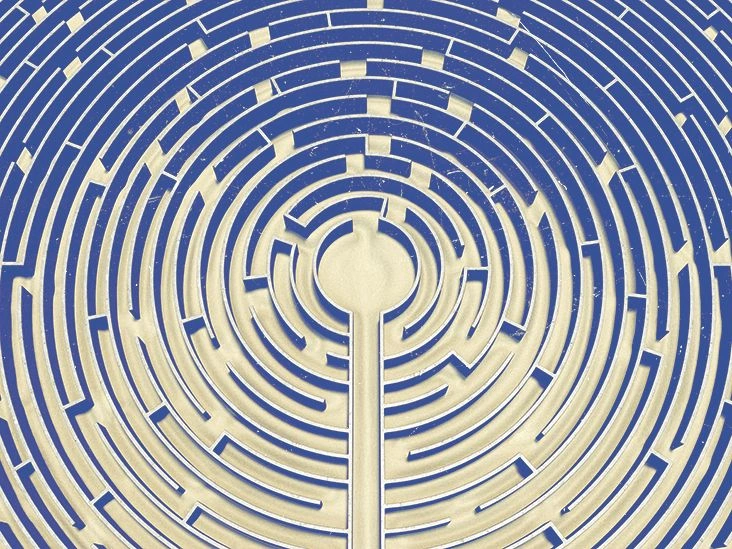Hey there! If you’ve found yourself scrolling through endless pages trying to figure out which kind of dementia might be behind the symptoms you or a loved one are seeing, you’ve just landed in the right spot. In the next few minutes we’ll walk through the most common dementia types, how they’re spotted, and why getting the identification right can change everything—from treatment options to daily coping strategies. Grab a cup of tea, settle in, and let’s decode this together.
Why Identification Matters
Imagine trying to solve a puzzle when you don’t even know what picture you’re aiming for. That’s what dementia care can feel like without a clear diagnosis. Knowing the exact type of dementia helps doctors:
- Target treatment: Certain medicines work better for Alzheimer’s, while blood‑pressure control can slow vascular dementia.
- Plan ahead: Understanding the trajectory lets families arrange support, adjust living spaces, and set realistic expectations.
- Reduce anxiety: A concrete label replaces vague fear with actionable knowledge.
But there’s a flip side—misdiagnosis can lead to unnecessary drugs, missed opportunities for early intervention, and emotional burnout. That’s why we’ll keep the focus on balanced, evidence‑based information, sprinkling in both the bright spots and the cautions.
Core Types Overview
| Type | Brain Changes | Early Symptoms | Key Diagnostic Tool |
|---|---|---|---|
| Alzheimer’s disease | Amyloid plaques & tau tangles | Forgetting recent events, word‑finding trouble | PET scan, CSF biomarkers |
| Vascular dementia | Small‑vessel strokes, white‑matter lesions | Sudden confusion, gait changes, “step‑wise” decline | brain scan diagnosis |
| Lewy Body dementia | Alpha‑synuclein deposits | Visual hallucinations, REM‑sleep behavior, fluctuating alertness | DaT‑SPECT imaging |
| Frontotemporal dementia | Frontal/temporal lobe atrophy | Personality changes, language loss, early onset (45‑65) | MRI volumetry |
These four forms cover roughly 80 % of all diagnoses, but keep in mind that “mixed dementia”—a blend of two or more types—is also possible, especially in older adults.
Alzheimer’s Disease
What’s Happening Inside?
Alzheimer’s is the poster child for dementia, accounting for up to 70 % of cases worldwide. The brain slowly fills with sticky protein clumps called amyloid plaques, while twisted tau tangles knot up neurons. Think of it as a city where traffic lights stop working and the streets get clogged—communication breaks down, and the city (your brain) can’t keep up.
Spotting the Signs
Early on, you might notice a loved one repeating questions, misplacing everyday items, or struggling to find the right word. Mood swings and mild disorientation often follow. These signs can feel like the brain is “forgetting how to talk,” but they’re usually subtle at first.
How Doctors Confirm It
Standard cognitive tests (like the MoCA) flag potential trouble, but a definitive picture often needs a PET scan to see amyloid buildup or a lumbar puncture for CSF biomarkers. Alzheimer’s AI tool is emerging as a supportive aid, crunching imaging data faster than a human eye can spot patterns.
Quick Visual: What’s Happening Inside the Brain?
If you’re a visual learner, picture a brain scan that looks like a fireworks display of bright spots—those are the plaques lighting up on a PET scan. That image can be a turning point, turning vague worries into a concrete diagnosis.
Vascular Dementia
When Blood Flow Gets Blocked
Think of your brain as a garden; it needs a steady flow of water (blood) to stay healthy. Vascular dementia occurs when tiny floods (strokes) or chronic low‑level “dry spells” damage the neural pathways. High blood pressure, diabetes, and smoking are common culprits.
Key Clues to Watch For
- Step‑wise decline: Unlike the gradual slope of Alzheimer’s, symptoms often appear in sudden jumps after a stroke or mini‑stroke.
- Physical signs: Unsteady gait, trouble with coordination, or sudden confusion.
Diagnostic Toolbox
An MRI or CT scan can reveal white‑matter lesions and old infarcts. That’s where brain scan diagnosis shines, giving doctors a map of vascular damage. In some cases, a doppler ultrasound of carotid arteries adds extra detail.
Risk‑Factor Checklist
Control your blood pressure, manage cholesterol, quit smoking, and stay active. Small lifestyle tweaks can dramatically lower your odds of developing vascular dementia or slow its progression.
Lewy Body Dementia
The “Fluctuating” One
Lewy Body Dementia (LBD) is a bit of a shape‑shifter. Imagine watching a television that flickers between crystal‑clear and static—that’s what patients often experience. Alpha‑synuclein protein clumps (Lewy bodies) appear in the brain’s cortex, affecting cognition, movement, and perception.
Symptoms That Stand Out
- Visual hallucinations that feel completely real.
- Parkinson‑like motor symptoms (shuffling gait, tremor).
- Fluctuating attention—some moments they’re sharp, next they’re muddled.
- REM‑sleep behavior disorder (acting out dreams).
How It’s Identified
There isn’t a single blood test for LBD. Doctors rely on clinical criteria, a DaT‑SPECT scan (which shows dopamine transporter deficits), and a thorough sleep history. Knowing the type early can steer treatment away from typical antipsychotics, which may cause severe reactions in LBD patients.
Quick Comparison Table
| Feature | Alzheimer’s | Lewy Body | Vascular |
|---|---|---|---|
| Memory loss pattern | Gradual | Variable, early visual issues | Step‑wise |
| Motor symptoms | Late‑stage | Early, Parkinson‑like | Possible after stroke |
| Hallucinations | Rare | Common | Uncommon |
Frontotemporal Dementia
When Personality Takes the Lead
Frontotemporal Dementia (FTD) often shows up in the 40s or 50s—much younger than Alzheimer’s. Instead of memory loss first, you’ll notice dramatic shifts in behavior, empathy, or language. Think of it as a theater where the actors (your personality) suddenly start improvising wildly.
Early Warning Signs
- Loss of social inhibitions—someone might start saying anything that comes to mind.
- Difficulty forming sentences or understanding words (primary progressive aphasia).
- Rigid or compulsive routines.
Getting the Diagnosis
An MRI that highlights frontal and temporal lobe atrophy is the usual imaging clue. Because the disease is rare, many neurologists recommend a multidisciplinary assessment, often involving speech therapists and neuropsychologists. Early detection is crucial, so early dementia detection strategies—like symptom journals—can be a game‑changer.
Journal Prompt Example
“When did you first notice a change in conversation style? Write down the date, setting, and what was said.” Having that record helps the doctor see patterns that point to FTD.
Advanced Techniques
Brain Imaging: From MRI to PET
Traditional MRI gives us a structural snapshot—think of it as a city map showing which streets are blocked. PET scans, on the other hand, reveal metabolic activity, lighting up areas where plaques are forming. Recent advances let us combine both modalities, creating a 3‑D “traffic‑flow” model of the brain.
Artificial Intelligence in Dementia Detection
AI is the new detective on the scene. By training on thousands of scans, algorithms can spot subtle patterns that even seasoned radiologists might miss. AI dementia detection platforms report 85‑90 % accuracy for early Alzheimer’s, and they’re getting better at flagging vascular changes too.
That said, AI is a helper, not a replacement. According to a study, clinicians who paired AI insights with their own expertise achieved the highest diagnostic confidence.
Pros & Cons of AI‑Assisted Diagnosis
- Pros: Faster read‑outs, standardized interpretation, potential for earlier detection.
- Cons: Black‑box opacity, dependence on high‑quality data, may miss rare subtypes.
Blood Biomarkers: The Emerging Frontier
Beyond imaging, scientists are honing blood tests for proteins like plasma p‑tau181 and neurofilament light chain (NfL). These markers can hint at Alzheimer’s or frontotemporal processes before symptoms fully appear. While still under validation, they promise a less invasive first‑step screening.
Practical Steps for Patients & Caregivers
Keep a Symptom Journal
Write down dates, situations, and any unusual behaviors. A simple table (you can use a phone note) makes patterns pop for the doctor. This is especially useful for differentiating between step‑wise vascular drops and the slower creep of Alzheimer’s.
When to Seek Professional Help
- Memory lapses that interfere with daily tasks for more than six weeks.
- Sudden changes after a stroke or head injury.
- Any visual hallucinations, especially if they’re new.
- Significant personality or language shifts in someone under 65.
If any of these ring a bell, schedule an appointment with a neurologist or geriatric specialist. Early evaluation can open doors to clinical trials, support services, and lifestyle interventions.
Lifestyle Actions That Can Slow Progression
While no magic bullet exists, research shows that the “brain‑healthy” trio—physical exercise, balanced nutrition, and mental stimulation—helps preserve cognitive reserve. Think of it like regular maintenance on a car; it won’t stop wear entirely, but it will keep things running smoother for longer.
- Exercise: 150 minutes of moderate activity per week (walking, cycling, dancing).
- Diet: Mediterranean‑style meals rich in fruits, veg, oily fish, and olive oil.
- Mental games: Puzzles, learning a new language, or even playing a musical instrument.
Conclusion
Understanding dementia types identification isn’t just an academic exercise—it’s a lifeline that guides treatment, empowers families, and brings peace of mind. Whether you’re navigating the cloudy waters of Alzheimer’s, the sudden drops of vascular dementia, the flickering lights of Lewy Body dementia, or the personality shifts of frontotemporal dementia, having the right label transforms uncertainty into a plan of action.
Remember, you don’t have to walk this path alone. Keep a symptom journal, ask for the most up‑to‑date imaging (think brain scan diagnosis), explore emerging tools like Alzheimer’s AI tool or AI dementia detection, and stay proactive about lifestyle choices. If you’ve found a tip that helped you or a loved one, share it with your community—knowledge truly multiplies when we pass it on.
Got questions or a story you’d like to add? Feel free to reach out—let’s keep the conversation going and make dementia identification as clear and compassionate as possible.


















Leave a Reply
You must be logged in to post a comment.